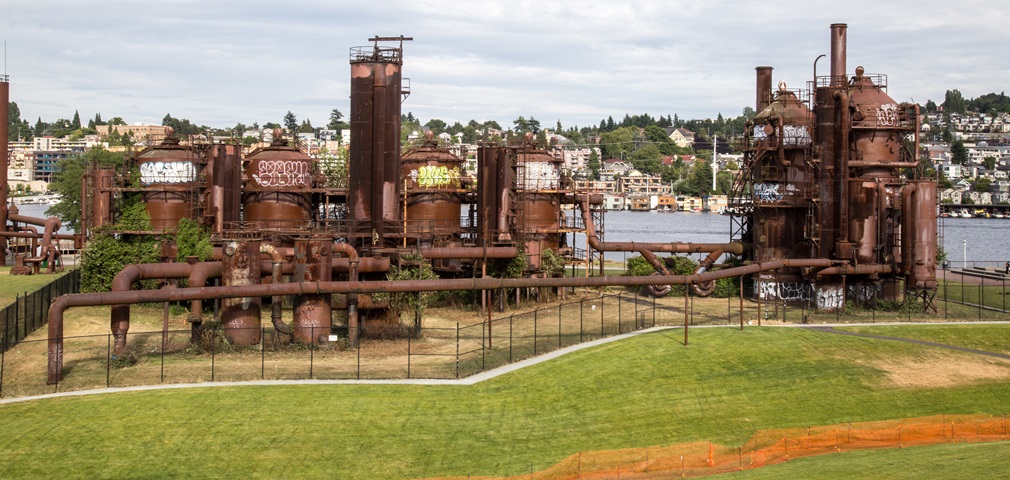On June 5, 2019, the U.S. Environmental Protection Agency (EPA) Administrator Andrew Wheeler—joined by the White House Executive Director for the Opportunity and Revitalization Council Scott Turner—traveled to Dauphin County, Pennsylvania, to announce that 149 communities have been selected to receive 151 grant awards totaling $64,623,553 million in EPA Brownfields funding through the Multipurpose, Assessment, and Cleanup (MAC) Grant Programs.
These funds are intended to help revitalize under-served and economically disadvantaged communities in Opportunity Zones and other parts of the country in assessing and cleaning up abandoned industrial and commercial properties. Forty percent of the communities selected for funding will receive assistance for the first time. Dauphin County was awarded $300,000 in grant funding.
“These grants fulfill several…priorities simultaneously: helping communities in need transform contaminated sites into community assets that not only create jobs and jumpstart economic development but also improve public health and the environment,” said Wheeler. “We are targeting these funds to areas that need them the most. Approximately 40 percent of the selected recipients are receiving Brownfields grants for the first time, which means we are reaching areas that may previously been neglected, and 108 of the selected communities have identified sites or targeted areas that fall within Opportunity Zones.”
Grants awarded by EPA’s Brownfield Program provide communities across the country with an opportunity to transform contaminated sites into community assets that attract jobs and achieve broader economic development outcomes while taking advantage of existing infrastructure. For example, Brownfields grants have been shown to:
- Increase Local Tax Revenue: A study of 48 Brownfields sites found that an estimated $29 million to $97 million in additional local tax revenue was generated in a single year after cleanup. This is two to seven times more than the $12.4 million EPA contributed to the cleanup of these sites.
- Increase Residential Property Values: Another study found that property values of homes near revitalized Brownfields sites increased between 5% and 15% following cleanup.
One hundred and eight communities selected for grants this year have identified sites or targeted areas in census tracts designated as federal Opportunity Zones. An Opportunity Zone is an economically-distressed community where new investment, under certain conditions, may be eligible for preferential tax treatment.
“The Brownfields grant program is a tremendous vehicle for bringing real revitalization and transformation to the distressed communities of America. …of the 149 communities selected for these grants, 108 will benefit communities with Opportunity Zones. I look forward to seeing the impact that these grants will have on neighborhoods and citizens across the country,” said Turner.
Some of the Opportunity Zone projects selected for funding include:
- Detroit, Michigan – to clean up the Riverside Park and provide a unique recreational venue that will include energy efficient LED and solar-powered lighting throughout the park.
- Waukegan, Illinois – to remediate vacant property, along Lake Michigan, which is expected to spur redevelopment of the lakefront.
- Rock Falls, Illinois – to clean up the last brownfield site along Rock River, making it the final obstacle overcome before riverfront redevelopment.
- Columbus, Georgia – to clean up dilapidated buildings near the Chattahoochee Waterfront, including a restaurant, offices, warehouses, covered loading areas, and a vehicle maintenance building.
- Huntington, West Virginia – to help redevelop former facilities into a new multistate enterprise, which is aimed at producing sustainable jobs through materials upcycling, recycling, composting operations, and logistics.
- Belfast, Maine – to help clean up and revitalize a contaminated building and make energy-efficient improvements such as LED lighting, triple-glazed windows, and a solar electricity-generating system that is expected to generate 100 percent of the building’s energy needs.
Background Information:
A brownfield is a property for which the expansion, redevelopment or reuse may be complicated by the presence or potential presence of a hazardous substance, pollutant or contaminant. There are estimated to be more than 450,000 brownfields in the U.S. As of May 2019, under the EPA Brownfields Program 30,153 properties have been assessed, and 86,131 acres of idle land have been made ready for productive use. In addition, communities have been able to use Brownfields grants to leverage 150,120 jobs and more than $28 billion of public and private funding.
In 2018 Congress reauthorized the statutory authority for the Brownfields Program. The reauthorization included changes to the program to expand the list of entities eligible for Brownfields grants, increase the limit of individual Brownfields cleanup grants to $500,000, and add grant authority for Multipurpose grants. These important changes will help communities address and cleanup more complex brownfield sites.
The 2019 National Brownfields Training Conference will be held on December 11-13 in Los Angeles, California. Offered every two years, this conference is the largest gathering of stakeholders focused on cleaning up and reusing formerly utilized commercial and industrial properties. EPA cosponsors this event with the International City/County Management Association.
Photo via Adobe Stock.

